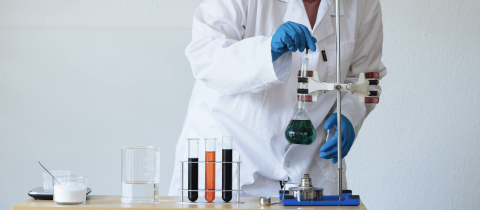Seeing Halloween decorations has been a highlight of an otherwise hectic month. While spider webs and ghosts send shivers down my spine, skeletons and the occasional amputated limb don’t rank high on the spooky scale for me. That is because I teach in McGill’s cadaver lab where amputated limbs and human bones are just another day at work.
A university anatomy lab is one thing, a “body farm” is quite another. These really do resemble a front yard that is an eerily decorated for Halloween. Contrary to what their names suggest, body farms aren’t places where body parts are grown (that would be more like regenerative medicine). Instead, they are research facilities dedicated to the study of human decomposition. After death, decomposition is inevitable. Where anatomy labs and body farms diverge is in their relationship with decomposition. We in the anatomy lab work tooth and nail to fight this process through embalming and temperature control, whereas the process of decomposition is exactly what forensic anthropologists are interested in!
If you’ve ever watched “CSI,” “Bones,” or any other science-rooted crime-solving show, you’ve definitely heard time or cause of death being determined by the state of a body. They usually get the science right because these shows use consultants. Bones, for example, does a relatively good job of using accurate forensic information. (Dr. Kristina Killgrove does a fantastic breakdown of episode accuracy!)
Body farms are the facilities used by forensic scientists and anthropologists to gain a better understanding of human decomposition, which is crucial in solving crimes, identifying human remains, and determining the time and cause of death. Decomposition varies greatly based on exposure to the elements, and so researchers at body farms replicate all potential cases by modifying/mimicking insect activity, weather patterns, and burial conditions. It is acute control over decomposition conditions and detailed records of these patterns that are the basis upon which forensic anthropology is built. Information garnered from body farms allows crime-solvers to interpret vital clues.
Currently, there are seven research facilities dedicated to forensic sciences in the United States, all of which emerged in the 1980s or later. Canada’s first (and only) body farm opened just five years ago, established by Dr. Shari Forbes. Since decomposition is directly dependent on the elements, Dr. Forbes argued that we needed to observe differences in our cold Canadian climate. “If we want a comprehensive understanding of human decomposition in Canada, we need to do research in our own backyard.” And so the “Recherche en Science Thanatologiques (Expérimentales et Sociales)” or “Research on Experimental and Social Thanatology” was born! This facility is actually in Bécancour, Quebec, so not quite in my backyard, but less than a 2-hour drive from Montreal.







